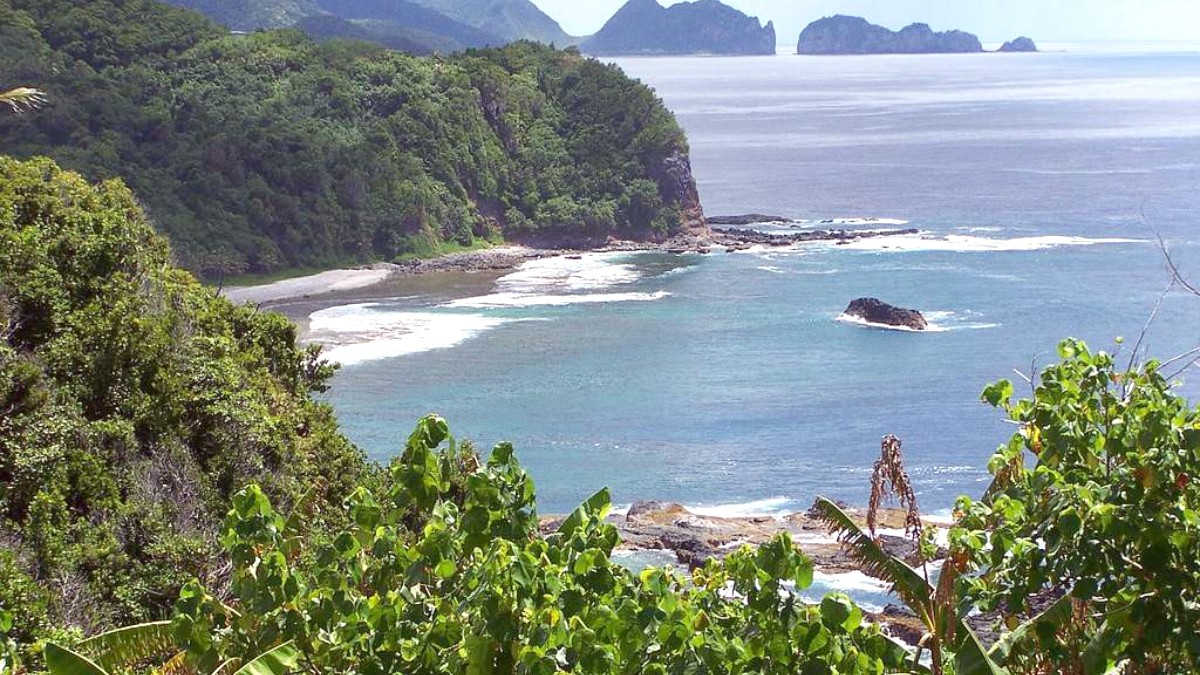
Samoa
Samoan cuisine grounds itself in traditional practices that sustained islanders for centuries. It relies heavily on fresh, locally sourced ingredients from fertile land and abundant ocean. Food is more than just sustenance; it is a central place in Samoan hospitality, communal life, and cultural ceremonies. Feasts for special occasions symbolize generosity and community.
Meal times for traditional Samoan meals, especially in villages, include a light breakfast, often a main lunch, and a large communal dinner where families gather. Restaurants in Apia generally follow international meal times.
Taro, breadfruit (Ulu), bananas (cooking and eating varieties), and coconut form the foundation of many meals. Coconut cream, known as Pe'epe'e, is a fundamental ingredient, adding richness and flavor. Taro leaves, called Luau, are also widely used.
Fresh fish (tuna, snapper, mahimahi) serves as a main protein. Chicken and pork are commonly consumed, often cooked in the Umu. The islands offer a bounty of tropical fruits, including papaya, mango, pineapple, passionfruit, and soursop.
Samoan flavors are typically simple and clean, designed to highlight the natural taste of ingredients. Common seasonings include lime, ginger, garlic, and sometimes chili for a mild kick. The creamy texture of coconut milk often balances these flavors. While main dishes stay consistent, preparation or names might vary between villages. Apia, as the capital, offers diverse dining, including international cuisine.
This refreshing dish consists of raw fish (often tuna or snapper) marinated in a creamy mixture of coconut cream, lime juice, and diced vegetables. The lime juice "cooks" the fish, giving it a firm texture. You find Oka at many local restaurants and resorts.
Typically served as a refreshing appetizer.
Palusami is a rich, savory dish made from taro leaves baked in coconut cream, often with corned beef or chicken, traditionally cooked in an Umu. Lu'au focuses solely on taro leaves, steamed or baked with coconut cream, typically without meat, serving as a staple vegetarian option.
A comforting, creamy dish, often with a smoky flavor.
Pani Popo are sweet, soft bread rolls baked in generous coconut cream, incredibly moist and slightly sweet. Koko Laisa features rice cooked with Samoan cocoa, a popular breakfast item or warm, chocolatey dessert with a distinct, robust flavor.
Sweet treats for any time of day.
A dessert made from baked pumpkin and coconut cream, offering a sweet, custard-like texture.
Small, sweet Samoan pancakes, often deep-fried. They present a simple, comforting treat.
Fine dining options are limited in Apia itself. You will mainly find them within high-end resorts located outside Apia, like Seabreeze Resort or Taumeasina Island Resort. These establishments offer international and Pacific Rim fusion cuisine, often with ocean views and a sophisticated atmosphere. They are suitable for special occasions.
Several mid-range restaurants in Apia offer a mix of Samoan, Pacific Rim, and international dishes. These include Chinese, Indian, and Italian cuisine, for diverse tastes. Examples like Paddles Restaurant on Beach Road or the restaurant at Amanaki Hotel provide comfortable settings and quality meals at reasonable prices.
For economical and authentic meals, Apia offers good choices. The main Fugalei Market features cooked food stalls with local dishes, fresh fruit, and snacks at very affordable prices. Small takeaway shops (ʻōla) are scattered throughout Apia, selling pre-cooked meals at low prices.
Apia has a decent selection of international restaurants. You find Chinese and Indian restaurants, reflecting historical migration patterns. Some European-style cafes and eateries also exist, providing familiar options for international visitors.
Catering to varied global tastes.
Apia Fish Market, near the waterfront, offers freshly caught seafood every morning. You can buy fish directly from fishermen, for cooking yourself or for a fresh meal.
Direct access to ocean bounty.
Certain fruits, like mangoes, are seasonal and taste best when in season.
During major holidays, like Independence Day, or cultural events, large Umu feasts are common, showing communal spirit.
A wider array of dishes, including roasted pig, appears at these feasts.
Feasts highlight the communal spirit of Samoan cooking.
Self-catering from the Fugalei Market and grocery stores in Apia offers the most control over your ingredients.
For specific dietary needs, communicate clearly and consider self-catering from local markets.
If you stay at a resort, inform them in advance about serious allergies or specific dietary needs. They might accommodate you with pre-arranged meals.
Advanced notice supports tailored meal preparation.
These establishments often serve fresh seafood and local produce cooked using simple, authentic methods. You eat with your feet in the sand, listening to the ocean, often sharing meals with other guests, creating a memorable, relaxed dining atmosphere.
Beyond simply dining, Samoa offers opportunities to immerse yourself in its food culture. These experiences lead to a appreciation of Fa'a Samoa.
This provides insight into daily life, allowing you to observe customs, share meals, and sometimes participate in village activities.
While formal language classes for tourists are rare, learning basic Samoan phrases from locals enriches your interactions. Samoans appreciate visitors who make an effort to speak their language.
The tranquil natural environment of Samoa, especially quiet beach areas or lush gardens, provides a peaceful setting for personal culinary exploration.
Dine by the ocean for a memorable experience.
Eat with feet in sand, listening to the ocean.
Food is deeply connected to Samoan hospitality and cultural ceremonies.
Many resorts and local restaurants host lively Fiafia nights, featuring traditional Samoan singing, graceful siva (dance) performances, and often spectacular fire knife dancing, accompanied by an Umu feast.
While hot springs are not prominent, traditional Samoan massage, Fofo, might be available locally or at resorts, sometimes incorporating local oils and techniques.
Exploring Samoan food is an adventure in itself. Be open to new tastes and local customs.